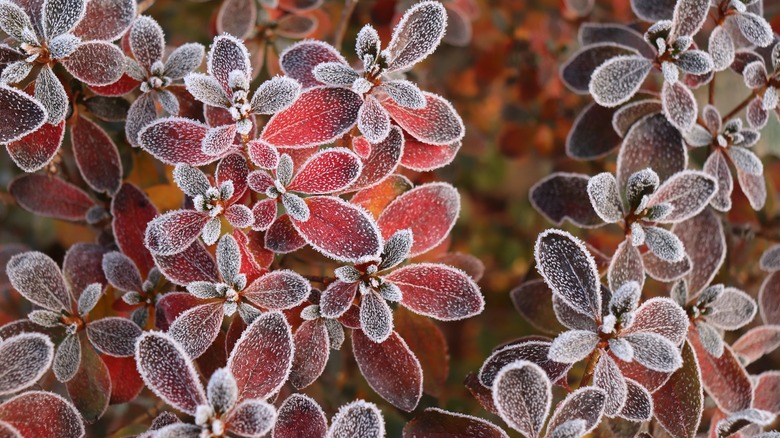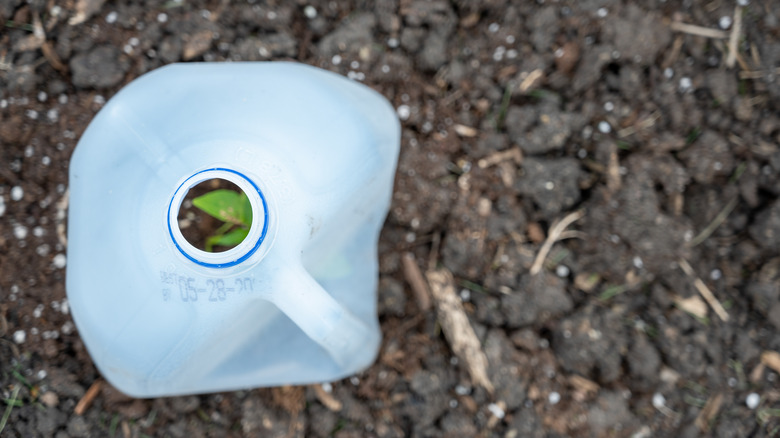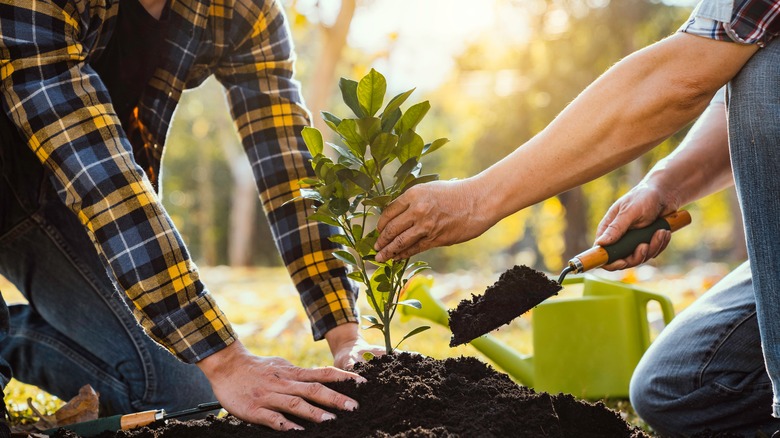What Is Winter Sowing?
You may think that winter is off-limits when it comes to gardening if you don't have a greenhouse or live in a warmer climate, but it turns out the colder months can actually be a great time to start planting. As long as you look up your area's hardiness zone, a calculation based on the minimum temperature of an area, you can find both flowers and produce that will survive even the coldest points of the year (via the United States Department of Agriculture Agricultural Research Service).
There is, however, a specific method of planting that can increase your new plants' likelihood of success if you're planning to grow in the winter. Direct sowing, the simple process of dropping and burying your own seeds, can work if you live somewhere warmer, but chilly and dry soil is often too hard to do this process yourself. Instead, there's a clever method that allows you to sow in the winter, using only milk jugs as a tool (via The Reid Homestead).
How to winter sow with containers
Winter sowing with milk jugs might seem a little strange at first, but this simple method is a great way to keep up your gardening until the soil softens in spring. Instead of sowing directly into the ground, you're creating what's essentially a mini greenhouse that gives your seeds the ability to sprout without having to deal with frozen or dry soil.
To do this, you only need a few plastic milk jugs, a knife, potting soil, and your seeds (via The Reid Homestead). Rinse out your milk jug and cut a few drainage holes in the bottom. This can be done with your knife, or if you're feeling fancy, the pointed end of a screwdriver, heated to melt the plastic. Then, cut across the top of the container below the handle, leaving an inch or so of plastic so you can open the jug like a door. Add in your potting soil and seeds, and you've created a perfect environment for your plants to sprout.
How to care for your sprouts
After you add in your seeds, the process is fairly hands-off. Keep the milk jugs outside so they can get sun, and make sure you're watering them routinely so the soil doesn't dry out — all you have to do is lift the top of the jug with the handle to check the moisture level. Once winter is over, you can remove the now-flourishing plants from the plastic and plant them in your garden with no worries about the state of the winter soil (via The Reid Homestead).
Despite the fact that you're creating a greenhouse-like effect, it's still important to consider which plants you plan on winter sowing. Summer flowers and vegetables like cucumbers usually aren't hardy enough to make it through a winter frost, even with the added protection of plastic. Instead, pick varieties you know will survive in your hardiness zone, such as broccoli, radishes, or carrots (via HGTV). If you do, this method will allow you to garden through the frostier months and leave you with a flourishing outdoor space come spring.


